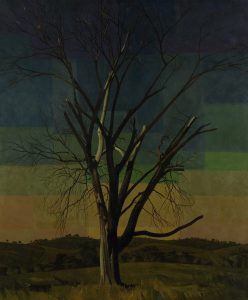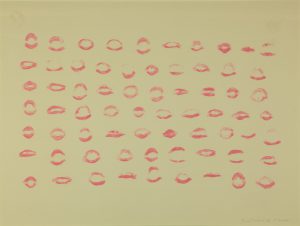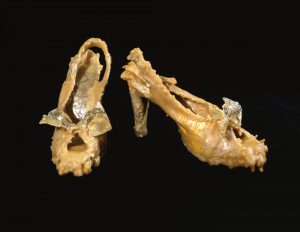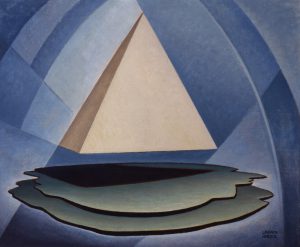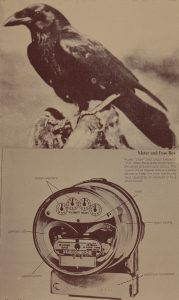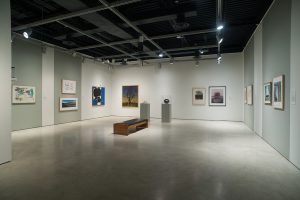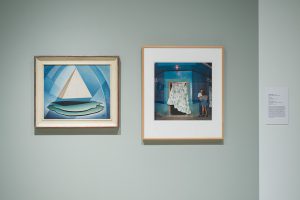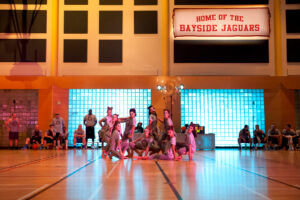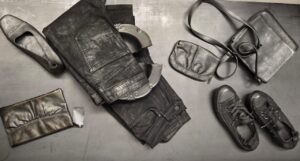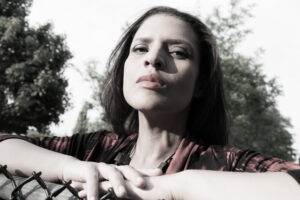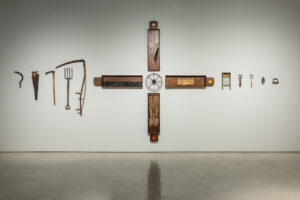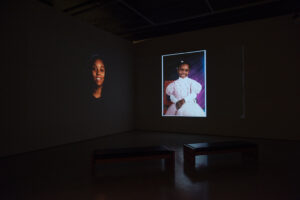It’s no longer a question of knowing the world, but of transforming it. -Frantz Fanon
Conceptual (and theoretical) de-linking is…the necessary direction of liberation and decolonization. -Walter Mignolo
On Anishinaabe territory of the Ojibwa, Pottawami and Ottawa, where also the Haudenosaunee have historically been established, in the country of Canada, this exhibition poses a question to the Art Gallery of Windsor’s permanent collection, which has been acquired over a period of 70 years: Is it possible to look at the works in a way that performs an aesthetic or cultural decolonization? What can decolonization be as a set of actions?
As a concept, cultural decolonization is a process that takes space for subjectivities, knowledge and narratives that have otherwise been silenced through forceful and uneven distributions of power. It is a process that acknowledges colonial realities as contemporary and mutable, and it begins from positions of Indigenous sovereignty. Decolonization is the process whereby the mutual implication of Indigenous and settler peoples is recognized by addressing the insidious reach of colonization.
Within this exhibition, works are presented in ways that encourage an affective reading between pieces while simultaneously undoing or unlinking from categorical distinctions that would otherwise serve to frame the works. It is an experiment of sorts, taking up that old question of whether or not the master’s tools can dismantle the master’s house. Can the works comprising the gallery’s collection be exhibited in such a way that challenges inherited paradigms by creating different readings amongst the works? It is a proposition of both unraveling and mending through relationships of juxtaposition, comparison and association.
History is not just the way things go and historical narratives are not merely descriptive: there are many ways of knowing the world. The objective here is to tell a different story by positioning the works in ways that encourage multiple and unresolved readings, thereby refusing any myth of singular truths or clear meanings.
cheyanne turions is an independent, Toronto-based curator and writer who holds a degree in Philosophy from the University of British Columbia. Her curatorial projects have been presented at the Western Front (Vancouver), VIVO Media Arts (Vancouver), Gallery TPW (Toronto), the Images Festival (Toronto) and A Space (Toronto), among others. Her writing has been published broadly, including with Canadian Art, C Magazine, FUSE and Monte Cristo. In addition to her curatorial work and writing practice, she is the director of No Reading After the Internet (Toronto), is part of the Editorial Advisory Committee at FUSE magazine, and sits on the Board of Directors for Fillip magazine and the Canadian Filmmakers Distribution Centre. Currently, she is the Shop Manager/Curator at Art Metropole and the curatorial resident at SBC Gallery.
This exhibition is sponsored by Kavanaugh, Milloy, Barristers and Solicitors, Windsor.
Winner of the 2014 OAAG Award for INNOVATION IN A COLLECTIONS-BASED EXHIBITION
